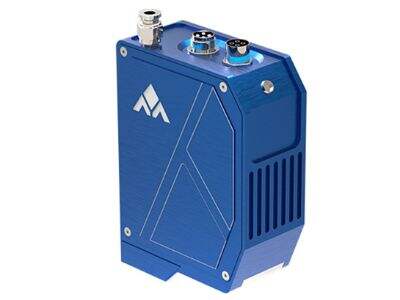Real Time Seam Guidance Tech Increases Weld Accuracy
Welding is a prime process for bonding joint materials in numerous manufacturing sectors. Building tight and bonds between bricks needs precision and accuracy. Earlier, welders had to depend on their skills for this, and based on their experience they attempted the welding process. Nevertheless, technology has answered in the form of real-time seam guidance assistance to give welders slightly more precise and greater consistency among their welding.
Sensors and cameras on the real-time seam guidance technology method are implemented for keeping track of a seam or joint that is welded within limited time. The Seam Finding system will continuously watch the seam position and provide feedback to the welding machine so that welding torch can follow the path correctly. The goal is to minimize the likelihood of human-driven errors (like if someone is welding a part while tired or distracted) and encourage optimal parts fit-up for better welding accuracy.
Real time seam tracking has been introduced to significantly increase the efficiency in welding processes.
With greater accuracy, real-time seam guidance technology also increases the efficiency in welding applications. Automatically moving the welding torch along the seam reduces manual setup. It not only saves time but also allows the welders to concentrate on another dimension of welding and thereby enhancing their productivity.
Real-Time Seam Guidance: Its Importance for Controlling Weld Quality
Welding consistency is important to ensure that every welded joint meets requisite quality standards. Seam guidance technology in real time is also a critical factor that helps maintain absolute weld quality by welding speed and torch angle. It helps prevent the welding process being inconsistent, so it can be induced to produce more homogeneous and trusted welds.
Automated Welding, Real-Time Seam Guidance for Maximum Productivity
Real-time seam guidance technology in automated welding systems translates into enormous productivity gains. These systems can operate at faster speeds without sacrificing the seam tracking sensor, and they continuously monitor the seam and make proper changes to welding torch-to get consistent results every time. This results in more rapid welding and allows businesses to be more productive and at a lower cost.
Real-Time Seam Tracking in Action
So, how does seam guidance work on an automated welding system. The welder would then guide the torch along the seam, constantly monitoring it to ensure adequate placement. MINYUE welding machine relies on an array of advanced sensors and cameras that track the laser seam tracking sensor as the welding torch follows the joint. The system then processes the data it has captured and almost in real time adjusts the torch position accordingly to correct any deviation from the desired path of the weld line.
Real-time Seam Guidance Technology in Action
During the welding process, if anything strays from the seam, including flopping part of a component for example, real-time seam guidance technology will detect it and rectify it instantly. This leads to the production of repeatable welds of PQR equal quality. With its real-time seam tracking, MINYUE achieves to make the robot weld as efficient as possible, thus increasing customer satisfaction and business performance.
Table of Contents
- Real time seam tracking has been introduced to significantly increase the efficiency in welding processes.
- Real-Time Seam Guidance: Its Importance for Controlling Weld Quality
- Automated Welding, Real-Time Seam Guidance for Maximum Productivity
- Real-Time Seam Tracking in Action
- Real-time Seam Guidance Technology in Action
 EN
EN
 AR
AR
 HR
HR
 NL
NL
 FR
FR
 DE
DE
 EL
EL
 HI
HI
 IT
IT
 JA
JA
 KO
KO
 PT
PT
 RO
RO
 RU
RU
 ES
ES
 TL
TL
 IW
IW
 ID
ID
 LV
LV
 LT
LT
 SR
SR
 SK
SK
 UK
UK
 VI
VI
 GL
GL
 HU
HU
 TH
TH
 TR
TR
 FA
FA
 AF
AF
 MS
MS
 MK
MK
 HY
HY
 AZ
AZ
 KA
KA
 UR
UR
 BN
BN
 LA
LA
 MN
MN
 KK
KK

